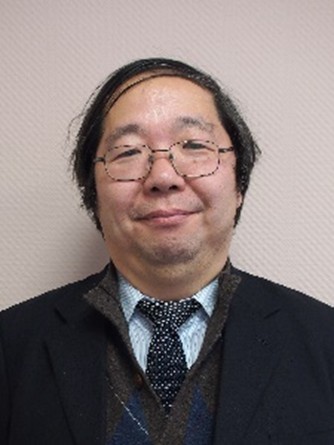Numerical Simulation Technologies for Research and Development of Advanced RF SAW/BAW Devices
Speaker: Ken-ya Hashimoto
School of Integrated Circuit Science and Engineering
University of Electronic Science and Technology of China, China
Abstract
Radio frequency (RF) surface and bulk acoustic wave (SAW/BAW) devices are indispensable in the radio frequency front-end in current mobile communication equipment. Now, the use of advanced simulation tools and computer environment is mandatory for not only daily product design but also research and development of the latest RF SAW/BAW devices.
This lecture overviews simulation technologies used in the research and development of RF SAW/BAW devices. First, a simple discussion is presented on the flow of the numerical simulation to clarify its applicability and necessity. Then, three types of simulation techniques are discussed from various aspects including their use in practical SAW/BAW device design and characterization.
The first one is the behavior model which describes device behaviors with a simple model, and the modified BVD model is representative. Owing to its calculation speed, the behavior model is applicable to the optimization of complex modules such like filters and duplexers including many SAW/BAW resonators and impedance elements. The second type is the one-dimensional model, and the coupling-of-mode model and the Mason model are popular for SAW and BAW devices, respectively. These models are still fast and often used for optimizing the device configuration. The third type is the full-wave analysis for cases where accuracy is more important than the calculation speed. The finite element method (FEM) is representative. It is useful to study how wave or device characteristics change with the structural design parameters. Furthermore, this analysis can be used to extract parameters required for the above-mentioned models.
Finally, the hierarchical cascading technique (HCT) is introduced. It can reduce the degrees of freedom in the FEM analysis of SAW devices significantly and speed up the calculation dramatically. Combination with the high-end graphic processor unit can accelerate the calculation further. It will be shown what HCT-based FEM made possible.
About the speaker

Professor Ken-ya Hashimoto received the B.S. and M.S. degrees in electrical engineering from Chiba University, Chiba, Japan, in 1978 and 1980, respectively, and the D.Eng. degree from the Tokyo Institute of Technology, Tokyo, Japan, in 1989.
He joined Chiba University as a Research Associate in 1980 and retired there as a Professor Emeritus in 2021. Right after retirement, he moved to the University of Electronic Science and Technology of China (UESTC), Chengdu, China, as a professor.
He served as a Guest Coeditor of the IEEE Transactions on Microwave Theory and Techniques (T-MTT) Special Issue on Microwave Acoustic Wave Devices for Wireless Communications in 2001, and a Publicity Cochair of the 2002, 2015 and 2021 IEEE International Ultrasonics Symposia, an Administrative Committee Member of the IEEE Ultrasonics, Ferroelectrics, and Frequency Control (UFFC) Society from 2007 to 2009 and from 2014 to 2016, a Distinguished Lecturer of the IEEE Electron Devices (ED) Society from 2007 to 2009, a General Cochair of the 2011 and 2018 IEEE International Ultrasonics Symposia, a General Chair of the IEEE MTT-S International Conference on Microwave Acoustics and Mechanics (IC-MAM) in 2024, and Exhibition Cochair of the 2024 IEEE UFFC Joint Symposium.
He is a Life Fellow of IEEE and received many prestigious awards, including the International Distinguished Lecturer Award of the IEEE UFFC Society in 2005, the Ichimura Industrial Award for Radio Frequency Surface Acoustic Wave Devices in 2015, Science and Technology Award for Research on High Performance Radio Frequency Surface Acoustic Wave Devices in 2018, and the Distinguished Service Award from the IEEE UFFC Society in 2019.
His current research interests include simulation and design of various high-performance surface and bulk acoustic wave devices, acoustic wave sensors and actuators, piezoelectric materials, and RF circuit design.
